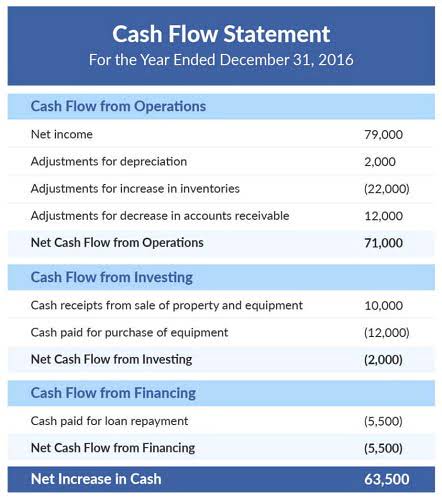
An equity method investment is recorded as a single amount in the asset section of the balance sheet of the investor. The investor also records its portion of the earnings/losses of the investee in a single amount on the income statement. The investor’s portion of the investee’s OCI will be recorded within their OCI accounts but can be aggregated with the investor’s OCI. Items recorded through OCI may https://www.bookstime.com/ include foreign currency translation adjustments, pension adjustments, or gains/losses on available-for-sale securities. When the investor has a significant influence over the operating and financial results of the investee, this can directly affect the value of the investor’s investment. The investor records their initial investment in the second company’s stock as an asset at historical cost.
Sale of equity method investment

The impairment loss is the amount of the carrying value over the fair value and is recorded as a reduction to the investment asset offset by an impairment loss. In instances where the investor owns less than 20% of an entity and is unable to demonstrate influence over the entity, the investor will apply the cost method of accounting to the investment. The cost method specifies recording the investment at the purchase price or historical cost and recording any activity in the income statement. Cost method investments are not adjusted for the earnings or losses of the investee, but may be analyzed for impairment.

Updated IASB and ISSB work plan — Analysis (July
Certain services may not be available to attest clients under the rules and regulations of public accounting. Get instant access to lessons taught by experienced private equity pros and bulge bracket investment bankers including financial statement modeling, DCF, M&A, LBO, Comps and Excel Modeling. The unrealized profit from the downstream transaction will be $80,000 since 80% of the stock lies unsold. As for the upstream transaction, no profits have been realized since no goods have been sold. In the case of both upstream and downstream sales, the profits are considered to be unrealized since the goods are flowing within the company, and there is no value addition in the form of sales to a third party. In the above example, there is no goodwill, so net identifiable assets will be the difference between total assets and total li1abilities, which is reflected in shareholders’ equity.
- PwC refers to the US member firm or one of its subsidiaries or affiliates, and may sometimes refer to the PwC network.
- At the end of the period the investment account equity method carrying value is as follows.
- The guidance recognizes judgement will be necessary for each individual set of circumstances.
- The cost method specifies recording the investment at the purchase price or historical cost and recording any activity in the income statement.
- In other words, a company either invests in or takes control of another company’s operations.
Changes from consolidation to the equity method.
Chartered accountant Michael Brown is the founder and CEO of Double Entry Bookkeeping. He has worked as an accountant and consultant for more than 25 years and has built financial models for all types of industries. He has been the CFO or controller of both small and medium sized companies and has run small businesses of his own. He has been a manager and an auditor with Deloitte, a big 4 accountancy firm, and holds a degree from Loughborough University. The carrying value of the investment shown on the balance sheet is summarized as follows. The investor records the receipt of its share of dividend with the following bookkeeping journal entry.
Substantial or even majority ownership of the investee by another party does not necessarily preclude the investor from also having significant influence with the investee. Exchange differences that arise when translating an investee’s financial statements into the investor’s presentation currency are recognised in OCI (IAS 21.44). The equity method is an accounting technique used by a company to record the profits earned through its investment in another company. This research project is designed to undertake a fundamental assessment of the equity method of accounting in terms of usefulness to investors and difficulties for preparers.
Goodwill and fair value adjustments
The investor’s profit or loss includes its share of the investee’s profit or loss and the investor’s other comprehensive income includes its share of the investee’s other comprehensive income. The investor determines that it should account for this investment under the equity method of accounting. The initial equity method of accounting example measurement reflects that there are basis differences of $300 in this transaction, consisting of $100 unrecorded intangible assets (customer relationship) and $200 goodwill. The investor calculates their share of the investee’s OCI activity based on their proportionate share of common stock or capital.
Everything You Need To Master Financial Statement Modeling
The equity method of accounting GAAP rules allow investors to record profits or losses in proportion to their ownership percentage. It makes periodic adjustments to the asset’s value on the investor’s balance sheet to account for this ownership. The investor calculates their share of net income based on their proportionate share of common stock or capital. Adjustments to the equity investment from the investee’s net income or loss are recorded on the investor’s income statement in a single account and are made when the financial statements are available from the investee.
Criteria for Significant Influence
- When it comes to confusing accounting topics, partial stakes in other companies and the equity method of accounting consistently rank near the top of the list.
- New and unique investment structures often challenge those principles and push the profession to make critical judgments about their application in today’s financial reporting environment.
- Dividends or distributions received from the investee decrease the value of the equity investment as a portion of the asset the investor owns is no longer outstanding.
- An investor may sell part of its interest in a 100% owned foreign equity investment but maintain its significant influence.
- Therefore, they make all their DTA and DTL adjustments for inside basis differences before publishing their financial statements.
- IAS 27 points out that the focus of such statements is on the financial performance of the assets as investments.
- The remaining life of the equipment is 10 years, and the investee does not intend to sell the equipment and plans to depreciate it on a straight-line basis for its remaining useful life.
The investor records OCI activity directly to their equity method investment account, with the offset recorded to their OCI account. Only investments in the common stock of a corporation or capital investments in a partnership, joint venture, or limited liability company qualify as equity investments and are eligible for the equity method of accounting. The cost method of accounting is used when an investor owns less than 20% of the investee, holding a minority interest. While the equity method makes periodic value adjustments, these values won’t change over time with the cost method.
Equity transactions of associate or joint venture

Earnings from equity investments are added back to net income as a reconciling item to arrive at cash flows from operating activities. Dividends received are presented as operating or investment cash inflows, dependent upon the type of the dividend, either a return on, or a return of investment . The final step for determining if the equity method of accounting applies to an investment is to assess the amount of control the investor has over the investee. If the investing entity has enough control over the investee to consolidate under ASC 810 Consolidation, the investor consolidates the investee as a subsidiary of the investor, and ASC 323 would not apply. Generally, ownership of 50% or more of an entity indicates control, but entities must use significant judgment and additional criteria before making the final ownership determination. This article will cover when and how to apply the equity method to account for certain investments.
- There appears to be significant diversity in the way the equity method is applied in practice mainly because of the two different concepts of measurement and consolidation underpinning the method.
- Using the equity method, a company reports the carrying value of its investment independent of any fair value change in the market.
- An investor has significant influence but not control of the investee if the investor holds between 20% and 50% of the voting common stock of an investee, and it does not exercise any control on the subsidiary.
- The share of the investee’s profits that the investor recognizes is calculated based on the investor’s ownership percentage of the investee’s common stock.
- The investor calculates their share of net income based on their proportionate share of common stock or capital.


Leave a reply